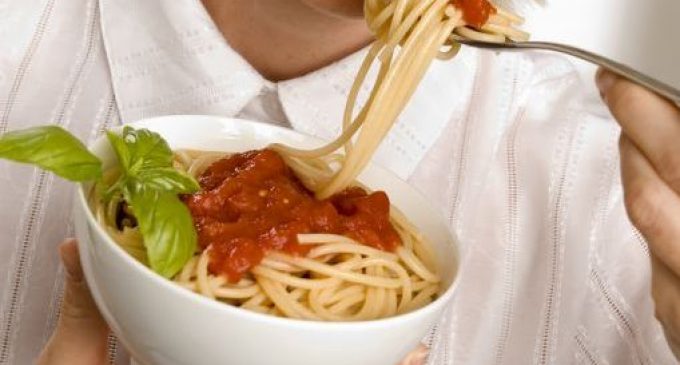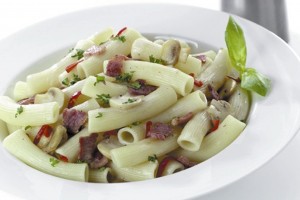Italy’s Love of Pasta Goes Off the Boil

New research from Mintel reveals that sales of pasta in Italy had a compound annual growth rate (CAGR) of -2% between 2011 and 2015, with sales falling to 908,100 tonnes in 2016. According to Mintel, health is the reason this national cuisine has fallen on hard times. Indeed, today, almost one quarter (23%) of Italians say they are limiting the amount of pasta in their diet for health reasons, rising to 28% of those aged 55 and over.
While Italians still consume the biggest volume of pasta per capita globally, they are cutting back on this traditional staple. Mintel research finds that retail per capita consumption of pasta in Italy fell to 15.2 kg in 2016, down from 17.0 kg in 2011 and it also seems their tastes are changing. In 2015, just 7% of Italians said they consumed any gluten-free pasta, while 13% ate organic pasta and 36% wholewheat pasta. By 2016, however, one in three (33%) Italians said they had eaten gluten-free pasta, with 8% eating it once a week or more, while 63% had used or eaten organic pasta, with 21% eating it once a week more. Meanwhile, 75% had eaten or used wholewheat or wholegrain pasta, with 30% eating it once a week or more.
Although Italians are turning their backs on tagliatelle, pappardelle and fettuccine, according to Mintel they remain in the top three pasta eating nations. In 2016, only the Brazilians (1,223,500 tonnes) and Russians (1,184,900 tonnes) consumed more.
Jodie Minotto, Global Food and Drink Analyst at Mintel, comments: “Health concerns over carbohydrate intake continue to plague sales of pasta, especially in Italy where retail sales have been in constant decline every year since 2009. The rising popularity of protein and the resurgence of low carb diets have made for a challenging environment for pasta, which is being shunned in favour of foods perceived to be healthier or more supportive of weight management efforts. New product development centred on positive nutrition and tapping into the ongoing interest in gluten-free food will help to polish pasta’s image.”
However, it’s not just in Italy that consumers are curbing their love of pasta. Across the globe ‘carbophobia’ is impacting sales. According to Mintel, the CAGR for pasta between 2011 and 2015 was -2% in UK, and completely flat in Australia, Canada, France, and the US.
 In the UK, as many as 22% of adults are limiting their carbohydrate intake for health reasons; meanwhile, one fifth (20%) of users regularly substitute pasta, rice and noodles with vegetables in the style of familiar carbohydrates. Across Europe, consumers are cutting down on pasta for the sake of their well-being, with 19% of those in Spain, 16% in Poland and 15% in Germany and France (respectively) limiting the amount of pasta they’re eating for health reasons.
In the UK, as many as 22% of adults are limiting their carbohydrate intake for health reasons; meanwhile, one fifth (20%) of users regularly substitute pasta, rice and noodles with vegetables in the style of familiar carbohydrates. Across Europe, consumers are cutting down on pasta for the sake of their well-being, with 19% of those in Spain, 16% in Poland and 15% in Germany and France (respectively) limiting the amount of pasta they’re eating for health reasons.
Away from Europe, in the US a significant 41% of consumers perceive rice and grains to be healthier than pasta.
While hunger for pasta may be waning, brands are innovating to appeal to consumers’ shifting appetites. Research from Mintel Global New Products Database (GNPD) reveals that one in seven (14%) pasta products launched in 2016 were gluten-free, up from just 5% of those launched in 2012. What’s more, 18% were organic, up from 11% launched in 2012, and 8% were wholegrain, up from 5% launched in 2012.
Jodie Minotto continues: “The trend for gluten-free and low carb diets and the vilification of wheat as a contributor to a variety of ailments, including weight gain, have contributed to the flat and declining sales of pasta in many key markets. As a result, the pasta category is vastly different to what it was even five years ago. Wheat-free, gluten-free and better-for-you options are now part of the standard pasta range. Consumer demand for natural, unprocessed foods has contributed to the rise in popularity of organic pasta, yet another option pasta brands now need to offer.”
As consumers shun carbs, some are starting to look for healthier alternatives. In the UK, ‘better-for-you’ is a choice factor for 24% of consumers when buying pasta. What’s more, pasta made with ancient grains appeals to 22% of consumers, while variants made with vegetables appeals to 30%.
 Finally, in terms of new product development, according to Mintel GNPD the organic claim leads the way in Europe and the US. In 2016, 28% of all new shelf-stable pasta introductions carried an organic claim in both Europe and the US, while one in 10 (10%) introductions carried this claim in Asia Pacific. Low/no/reduced allergen was the second most popular claim in both Europe (22%) and the US (20%), while over one in 10 introductions carried this claim in Asia Pacific (13%) and Latin America (12%). Meanwhile gluten-free came in as the third most popular claim in the US (17%) and Europe (20%).
Finally, in terms of new product development, according to Mintel GNPD the organic claim leads the way in Europe and the US. In 2016, 28% of all new shelf-stable pasta introductions carried an organic claim in both Europe and the US, while one in 10 (10%) introductions carried this claim in Asia Pacific. Low/no/reduced allergen was the second most popular claim in both Europe (22%) and the US (20%), while over one in 10 introductions carried this claim in Asia Pacific (13%) and Latin America (12%). Meanwhile gluten-free came in as the third most popular claim in the US (17%) and Europe (20%).
“All manner of ingredients are being used in next generation ‘pasta’, the latest of which is seaweed. Sourdough fermentation is also being used to improve digestibility of gluten in wheat based pasta,” Jodie Minotto concludes.


































